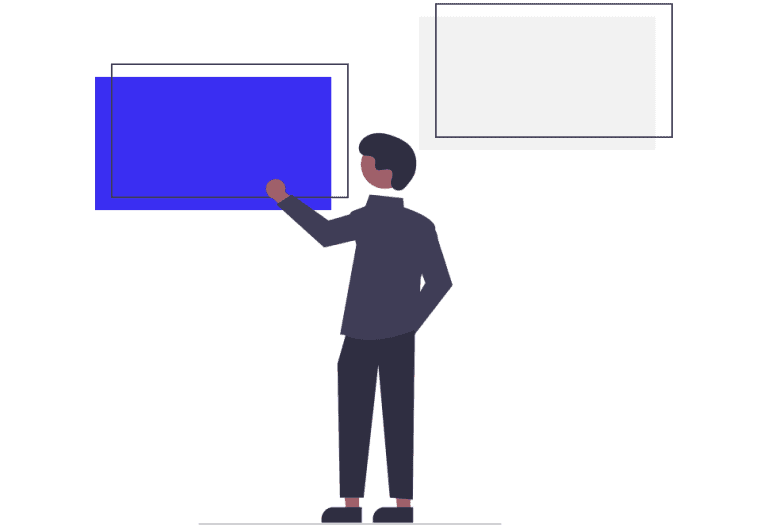Marketing automation has moved from being a nice-to-have to a necessity. Businesses no longer compete only on product or price — they compete on how smoothly they guide prospects and customers through the entire journey. That journey is full of repetitive tasks: follow-up emails, lead scoring, onboarding, event reminders, renewal nudges, and more. Doing all of this manually is both unrealistic and unscalable.
Automation fills the gap. When applied correctly, it saves time, reduces human error, and keeps your brand consistent in every interaction. But automation is not about replacing people; it’s about amplifying what teams already do well. With the right workflows in place, you create better experiences for leads and customers while freeing your team to focus on strategy.
Here are 11 marketing automation workflows worth applying in almost any business.
1. Lead nurturing sequences
Not every prospect is ready to buy the first time they visit your site. A nurturing workflow keeps them engaged without overwhelming your sales team.
Instead of one-off blasts, you design a drip sequence that educates and builds trust step by step. The first email might share a valuable guide, the next could highlight a customer story, and later messages introduce product demos or trials. Good nurture flows balance education with subtle calls-to-action.
Example sequence:
- Day 1: Welcome email with resource links.
- Day 4: Educational blog post or webinar invite.
- Day 10: Case study featuring a similar business.
- Day 20: Personalized trial or consultation offer.
This workflow ensures no lead slips through the cracks, while also giving sales a pipeline of prospects that are warmer and more informed.
2. Abandoned cart reminders
E-commerce brands live and die by how they handle abandoned carts. Without follow-ups, up to 70% of carts are lost. Automation makes recovery systematic.
A typical abandoned cart workflow doesn’t just send a single reminder. It layers incentives and urgency over time.
- First reminder: Sent within a few hours, friendly tone, focusing on product details.
- Second reminder: Sent within 24 hours, adding urgency (“stock running low”).
- Final reminder: Sent within 72 hours, including an incentive like free shipping or a discount.
Beyond email, you can extend this workflow to SMS, push notifications, or even retargeting ads. The key is to nudge without being pushy.
3. Post-purchase follow-up
Too many businesses stop engaging after the sale. Smart automation extends the relationship.
A post-purchase workflow can thank customers, provide onboarding help, and encourage repeat purchases. For e-commerce stores, ensuring smooth payments with Stripe and Apple Pay integrations makes follow-up offers even more seamless. For SaaS, that might mean a series of training emails, which can be created using AI email prompts. For e-commerce, it could be usage tips, style guides, or complementary product suggestions.
Done well, post-purchase flows:
- Reduce buyer’s remorse.
- Increase experiential retail adoption (critical for SaaS).
- Drive referrals and reviews.
ReferralCandy plugs into post-purchase automation to run referral, affiliate, and influencer campaigns end-to-end, issuing unique codes/links, tracking conversions, and paying rewards so every thank-you email sparks measurable word-of-mouth.
This isn’t just customer service — it’s revenue growth hidden in plain sight.
4. Lead scoring and qualification
Marketing and sales alignment often breaks down over lead quality. Automation fixes that by applying scoring rules consistently.
Workflows can add or subtract points based on behaviors:
- +10 for downloading a whitepaper.
- +15 for attending a webinar.
- -5 for unsubscribing from a newsletter.
Once a threshold is met, the system can notify sales or automatically assign the lead. Instead of debating “who’s ready,” both teams agree on a data-driven definition.
5. Onboarding new subscribers
When someone signs up for your newsletter, trial, or community, the first impression matters. Automation ensures you greet them with consistency.
A good onboarding sequence introduces your brand’s voice, sets expectations, and delivers early value. For instance:
- Email 1 (immediately): Welcome + “what to expect” note.
- Email 2 (2 days later): Popular resources or guides.
- Email 3 (1 week later): Success story to inspire action.
- Email 4 (10 days later): Soft CTA for deeper engagement (trial, demo, purchase).
Instead of a flat welcome, you create a mini journey that strengthens connection from day one.
6. Event and webinar campaigns
Events require a lot of touchpoints. Without automation, the logistics eat you alive.
A simple workflow handles:
- Confirmation email with calendar invite.
- Reminder emails (1 week, 1 day, 1 hour before).
- Follow-up email with recording, slides, and next steps.
Layering segmentation makes it even more powerful. For example, attendees who engaged heavily can get a sales CTA, while no-shows are nudged with “sorry we missed you — here’s the replay.” This workflow turns one event into weeks of structured engagement.
7. Customer feedback collection
Automation makes it easy to ask at the right time. Instead of sending random surveys, you trigger requests after meaningful moments: post-purchase, after onboarding, or following a support interaction. Surveys can be simple (NPS), detailed, or even a staff experience survey, but the workflow ensures the ask is timely and consistent.
Surveys can be simple (NPS) or detailed, but the workflow ensures the ask is timely and consistent. Even better, you can route responses: positive ones to review platforms, negative ones to support for quick resolution. This transforms feedback into both a marketing asset and a retention tool.
8. Re-engagement campaigns
Inactive contacts clutter databases and drag down engagement rates. A re-engagement workflow gives them a chance to reconnect.
Typically, it starts with a “we miss you” email, followed by valuable content or a special offer. If no response, the workflow can automatically suppress them from future campaigns, protecting deliverability.
The psychology is simple: remind them of value, give them a reason to care, and gracefully step back if they’re not interested. Automation makes the process disciplined instead of ad hoc.
9. Upsell and cross-sell opportunities
Once someone has purchased, automation can surface relevant add-ons without a pushy sales pitch.
For SaaS: suggest a higher tier once usage patterns indicate readiness.
For e-commerce: recommend complementary items after a purchase.
The workflow can use rules like:
- If a customer buys product A, show accessories within 7 days.
- If a user hits a feature limit in the free plan, trigger an upgrade email.
This doesn’t just add revenue — it feels personalized and helpful.
10. Renewal and retention workflows
Subscription businesses thrive on renewals. Automation ensures reminders are sent at the right cadence:
- 30 days before renewal: reminder + highlight of recent value.
- 7 days before: urgency email with “don’t lose access.”
- Post-renewal: thank-you message + onboarding for new features.
Retention workflows can also flag at-risk customers based on inactivity, triggering personalized check-ins. Instead of waiting for churn, automation helps you act early.
11. Internal alerts and task assignments
Marketing automation isn’t only about external communication. Internal workflows keep teams aligned.
For instance, if a lead visits a pricing page three times in a week, the system can trigger an alert to sales. Or if a high-value customer submits a support ticket, the workflow can escalate it automatically.
By embedding internal triggers, you make sure important signals don’t get lost. The result: faster responses, fewer missed opportunities, and better coordination.
Bringing it all together
Individually, these workflows save time and add consistency. Together, they create an ecosystem where marketing and sales reinforce each other. The real magic of automation is not in the technology itself, but in how it frees humans to do what they do best: build relationships, think creatively, and solve complex problems.
The businesses that win with automation aren’t the ones that automate everything blindly. They are the ones that identify repetitive, time-sensitive, or error-prone processes and replace them with smart workflows — while keeping human judgment at the center.
Social proof, personalized journeys, thoughtful content — these are still human-driven. Automation simply ensures they reach the right person at the right time.


